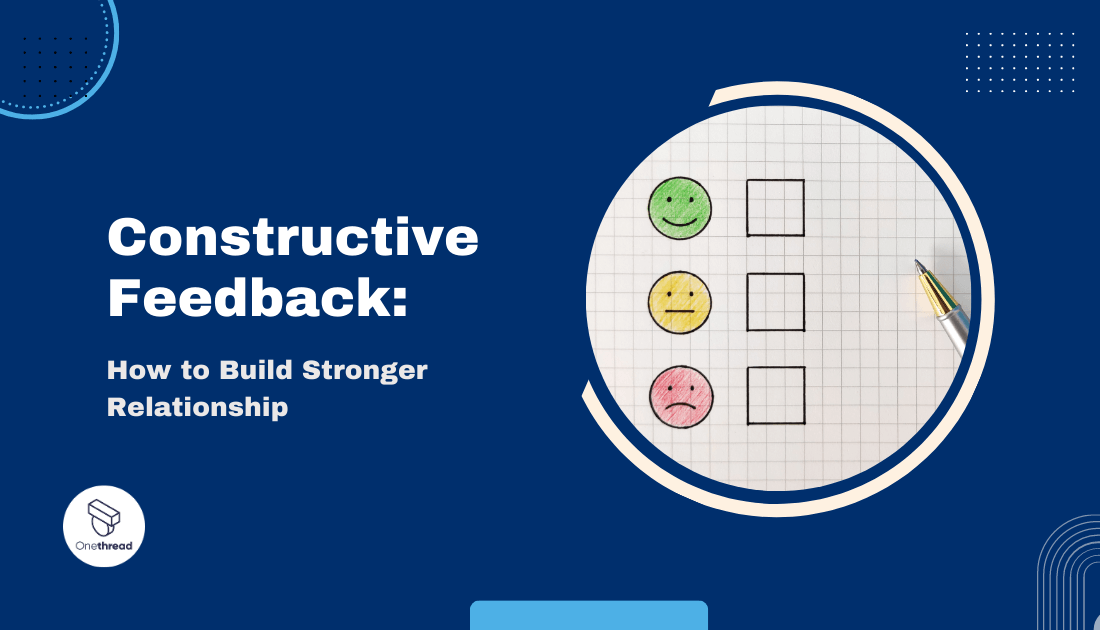Imagine crafting connections like weaving a tapestry – each thread contributing to its strength. Now, replace those threads with insightful and constructive feedback, and you’ve got the key to building unbreakable bonds.
In a world where connections thrive on growth, feedback is the secret sauce. It’s like adding spices to a recipe, elevating flavors and creating something extraordinary.
Welcome to a realm where feedback isn’t just talk – it’s transformation. Think of this article as your feedback treasure map. We’re diving into the art of giving and receiving feedback, revealing how it shapes connections.
Ready to unleash the power of constructive feedback? Let’s dive in and build stronger relationships, one insightful exchange at a time!
What Is Constructive Feedback?
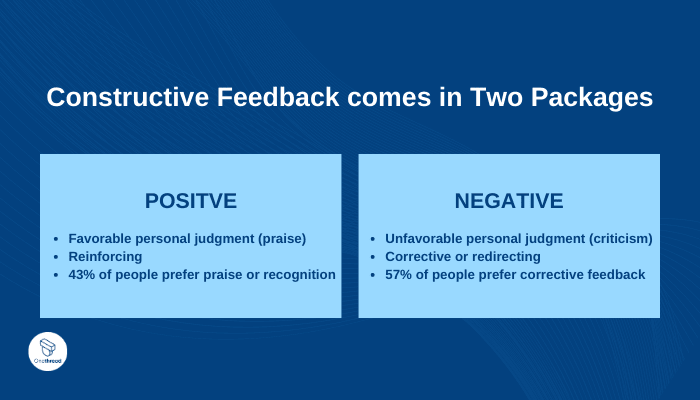
Constructive feedback involves providing employees with feedback on their performance to help them improve their skills and cultivate positive behavior. What sets constructive criticism apart is its ability to deliver negative feedback without appearing derogatory.
Offering feedback is an integral aspect of the work culture, as positive feedback boosts employee enthusiasm. However, providing negative feedback can be challenging, even for experienced managers, as they often struggle to strike the right balance. Poorly delivered feedback can inadvertently damage relationships with employees, as it may come across as overly critical.
To address this, it is essential to understand the most effective approach for giving feedback that not only motivates employees to excel but also enhances their confidence. In the following sections, we will explore a set of well-explained tips to achieve this.
The Significance of Constructive Feedback
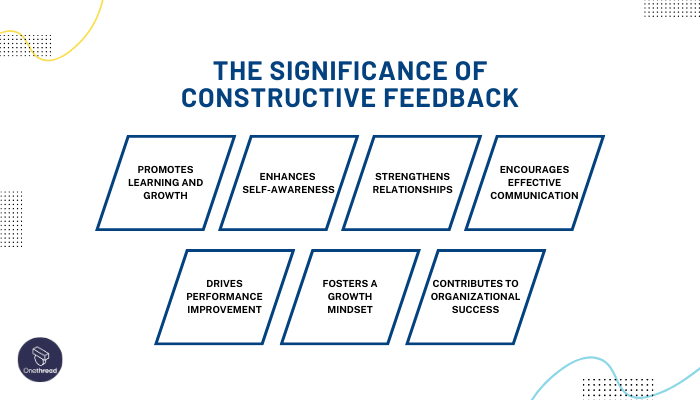
As we have discussed earlier, constructive feedback is not about criticizing or finding faults; rather, it focuses on highlighting strengths, addressing areas for improvement, and guiding individuals toward better outcomes. Here are a few reasons why providing constructive feedback is crucial:
Promotes Learning and Growth
Constructive feedback creates an environment of continuous learning. When individuals receive feedback that points out both their successes and areas needing improvement, they gain insights into their performance. This insight enables them to make informed decisions about how to enhance their skills, knowledge, and abilities.
Enhances Self-Awareness
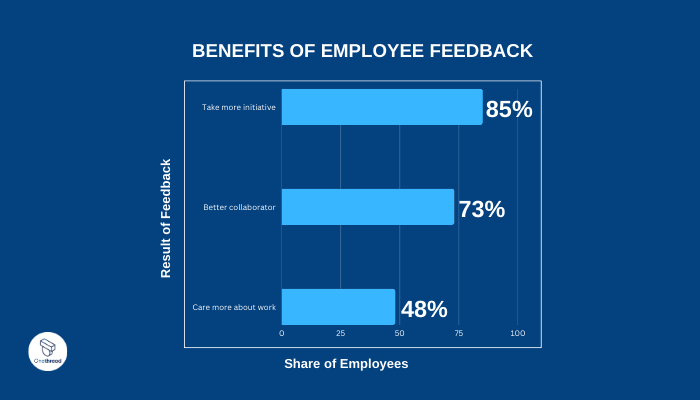
Receiving constructive feedback can lead to increased self-awareness. It helps individuals gain a better understanding of their strengths and weaknesses, allowing them to identify areas they might not have recognized on their own. This awareness is a crucial first step in working towards self-improvement.
Strengthens Relationships
Offering and receiving constructive feedback builds trust and strengthens relationships. When feedback is given in a respectful and caring manner, it demonstrates a genuine interest in helping others succeed. This fosters a sense of camaraderie and mutual support among team members.
Encourages Effective Communication
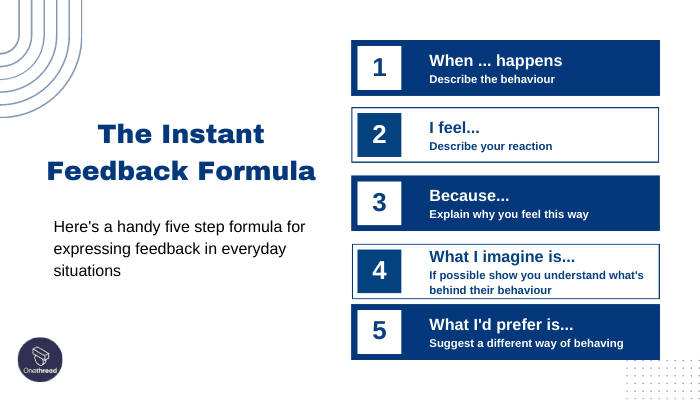
Constructive feedback requires clear and effective communication skills. When giving feedback, individuals need to articulate their observations and suggestions in a way that is easy to understand and actionable. Likewise, when receiving feedback, active listening and open-mindedness are essential to fully grasp the message being conveyed.
Drives Performance Improvement

Feedback that is well-intentioned and specific helps individuals identify practical steps for improvement. By focusing on actionable recommendations, constructive feedback empowers individuals to take the necessary actions to enhance their performance.
Fosters a Growth Mindset
A growth mindset is the belief that abilities and intelligence can be developed through effort and learning. Constructive feedback aligns with this mindset by emphasizing that improvement is attainable through dedication and adapting to new information.
Contributes to Organizational Success
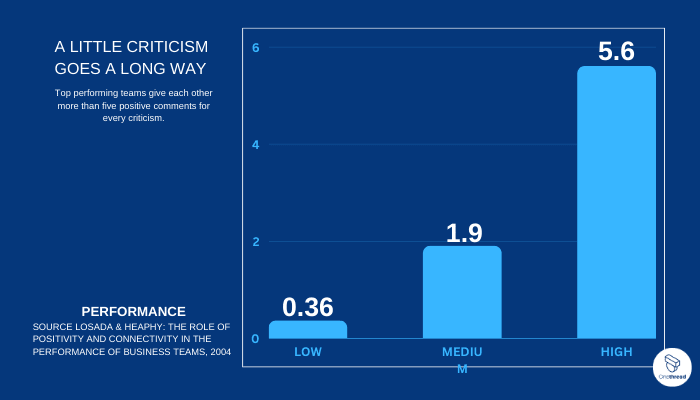
In a professional context, constructive feedback plays a pivotal role in achieving organizational goals. Teams that openly share feedback cultivate an atmosphere of continuous improvement. When everyone is committed to helping one another succeed, overall team performance and productivity are likely to increase.
Constructive feedback empowers individuals to learn, grow, and enhance their performance while fostering positive relationships and a culture of improvement. When delivered and received with respect and a genuine desire to help, constructive feedback becomes a catalyst for success at both the individual and organizational levels.
Constructive Feedback Examples
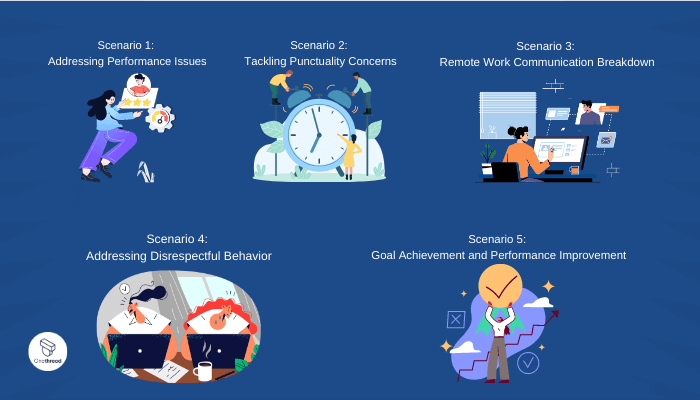
Constructive feedback is a powerful tool for fostering growth and improving performance. It requires careful word choice, strong communication skills, and emotional intelligence. Let’s go through five sample scenarios to guide managers in providing constructive criticism to their employees:
Scenario 1: Addressing Performance Issues
Feedback: Acknowledge the individual’s dedication but express concerns about recent work performance and missed deadlines. Offer assistance and initiate a discussion to identify potential challenges and find solutions.
Scenario 2: Tackling Punctuality Concerns
Feedback: Recognize the individual’s skills but address the issue of late arrival and its impact on the team. Emphasize the importance of timely attendance and invite a discussion to explore underlying reasons and create a plan for improvement.
Scenario 3: Remote Work Communication Breakdown
Feedback: Highlight the feedback recipient’s lack of responsiveness and the resulting information gaps. Stress the need for regular communication and encourage troubleshooting any work-related challenges to ensure project deadlines are met.
Scenario 4: Addressing Disrespectful Behavior
Feedback: Observe the employee’s recent negative attitude towards colleagues and offer support. Inquire about potential issues causing dissatisfaction and provide a safe space for discussion and resolution.
Scenario 5: Goal Achievement and Performance Improvement
Feedback: Acknowledge the individual’s past successes and express concern about recent goal non-achievement. Propose adjusting goals to be more manageable and track progress for potential future adjustments.
Mastering Constructive Feedback: Strategies for Positive Impact
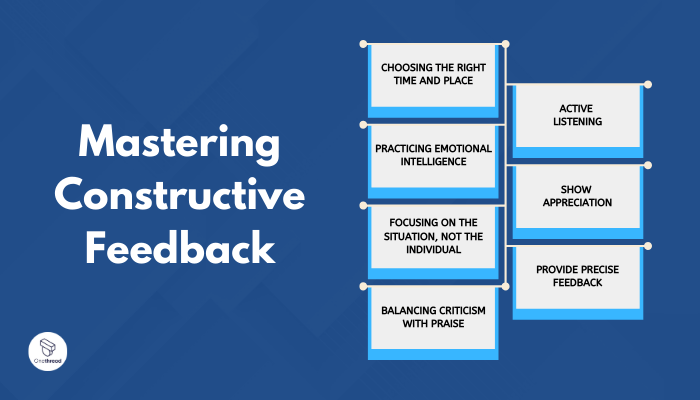
Constructive criticism plays a vital role in fostering growth and improvement within a team. When providing feedback to your employees, it is crucial to approach the process in a constructive and positive manner.
Here are some effective tips to ensure your feedback has a lasting positive impact:
1. Choosing the Right Time and Place
Selecting an appropriate setting is essential when giving feedback. For simple words of appreciation, a public setting among team members suffices. However, when addressing areas for improvement, it is best to schedule a private one-on-one meeting. This approach prevents embarrassment and encourages open dialogue.
Timing is equally important. Deliver feedback as soon as possible when the situation is clear, avoiding unnecessary delays that can diminish its constructive nature. Managers should recognize employee accomplishments promptly, while negative feedback should be given after emotions have been managed, ensuring objectivity.
2. Practicing Emotional Intelligence
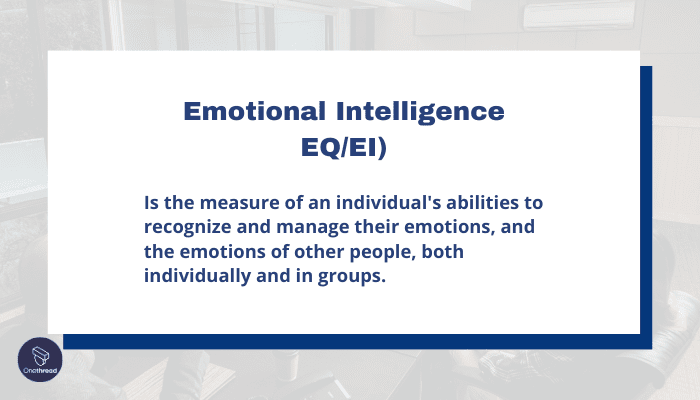
Before providing feedback, it is crucial to be aware of your emotional state. Negative emotions, such as anger, can lead to inappropriate feedback that hinders progress. Therefore, it is essential to manage your emotions to ensure the feedback is effective and well-received.
3. Focusing on the Situation, Not the Individual
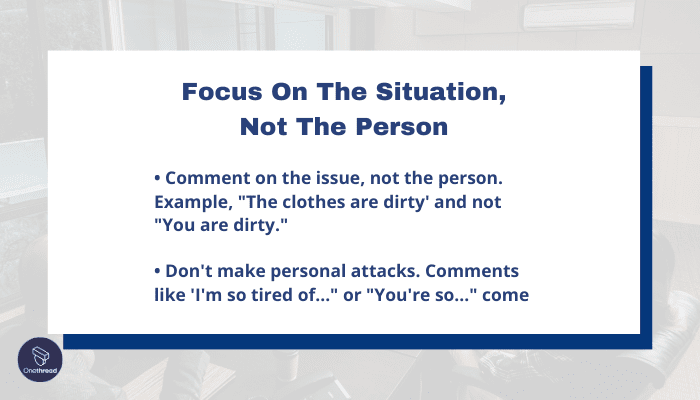
To ensure constructive feedback, center the discussion on the situation at hand rather than the individual’s personal traits. By avoiding personal attacks and biases, the focus remains on resolving the issue and addressing specific behaviors or actions.
4. Balancing Criticism with Praise
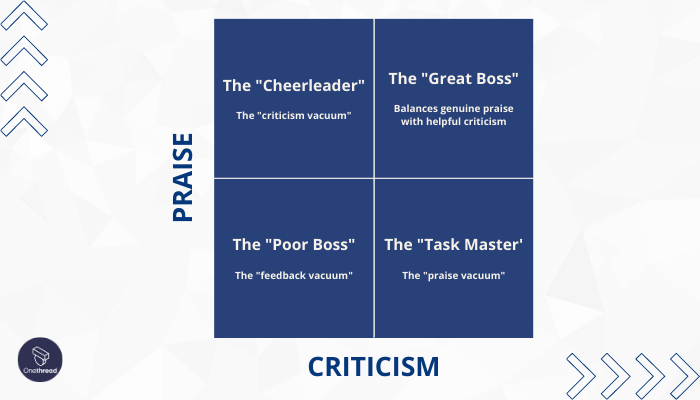
To deliver effective constructive feedback, it is vital to strike a balance between criticism and praise. Overwhelming an individual with criticism can lead to defensiveness and hinder engagement.
Acknowledging employees’ strengths and praising their achievements is just as important as highlighting areas for improvement. Conclude the feedback session on a positive note to maintain enthusiasm and foster growth.
5. Active Listening
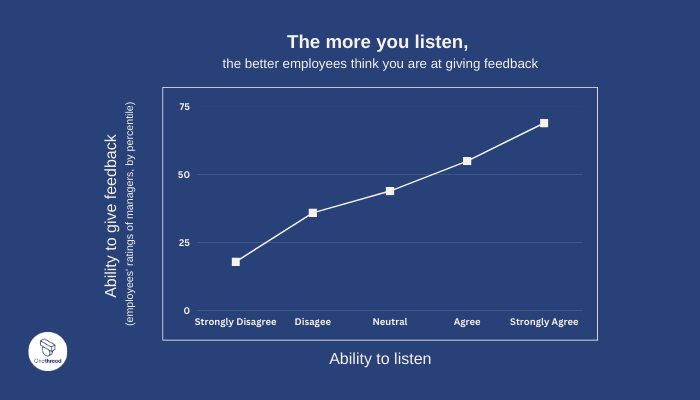
Encourage open communication by listening actively to your employees. Engage in conversations that allow them to express their perspective, concerns, and opinions. This approach demonstrates that their input is valued and promotes their involvement in finding solutions.
6. Show Appreciation
When providing constructive criticism, remember to acknowledge and appreciate your employees’ efforts and accomplishments. By emphasizing their positive qualities, you boost their confidence and create a receptive environment.
Adopting a positive and appreciative tone enables them to be more open-minded and receptive to your feedback.
7. Provide Precise Feedback
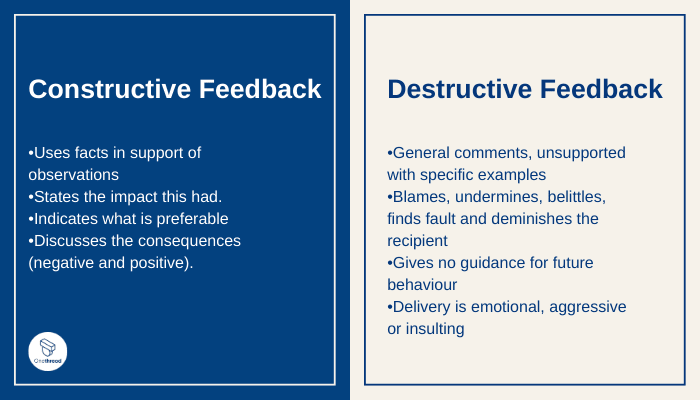
Ensure your feedback is clear and specific by focusing on the importance and impact of the issue rather than simply stating what needs to be done. Instead of mentioning general expectations like punctuality, address the actual problem—for example, the impact of delayed customer service. The more detailed and precise your feedback, the more constructive it will be.
By implementing these strategies, you can effectively deliver constructive feedback that fosters growth, enhances productivity, and maintains a positive work environment.
Enhancing Feedback with Onethread
Onethread steps in as a powerful catalyst, transforming feedback into a seamless, transparent, and productive process. Here’s how Onethread enhances the art of delivering and receiving constructive feedback:
Structured Communication Channels
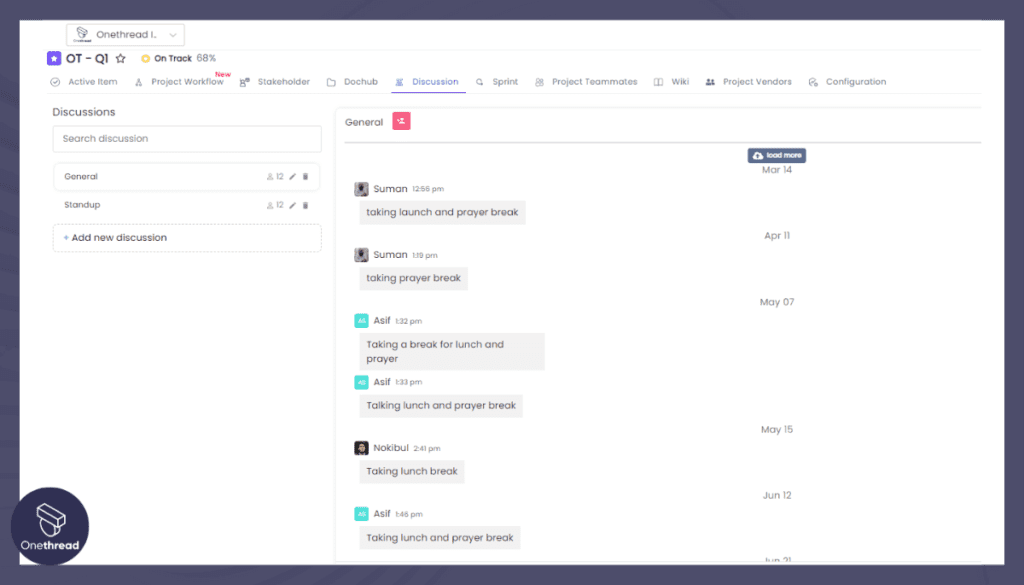
Onethread’s real-time messaging feature offers structured communication channels for sharing feedback. Team members can initiate discussions around specific tasks, projects, or accomplishments. This focused environment ensures that feedback is contextually relevant, making the process more actionable and meaningful.
Documented Feedback Loop
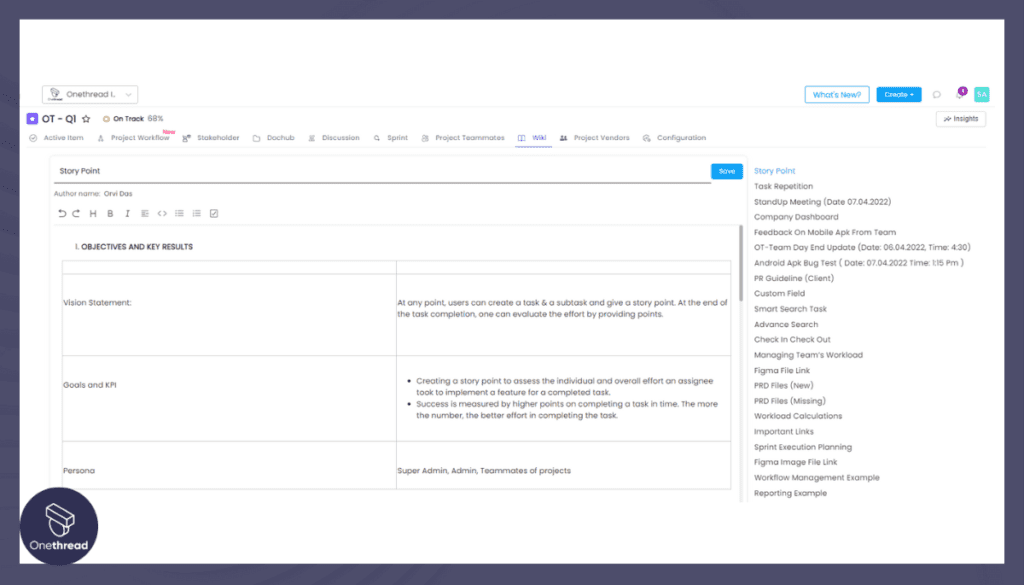
Gone are the days of feedback being lost in transient conversations. Onethread’s collaborative document editing empowers teams to document feedback, discussions, and action items. This documented feedback loop creates a record that team members can revisit, ensuring accountability and progress tracking.
Asynchronous Reflection and Response
Onethread’s asynchronous nature is a game-changer for feedback. Team members can reflect on feedback and respond at their own pace. This fosters thoughtful consideration and ensures that responses are well-considered, leading to more constructive and effective exchanges.
Transparent Accountability
Feedback is most impactful when it leads to action. Onethread’s task management feature allows teams to convert feedback into actionable tasks. Assigning tasks related to improvements or addressing concerns ensures that feedback translates into tangible results, promoting accountability and growth.
Collaborative Problem-Solving
Negative feedback often identifies areas that need improvement. Onethread’s collaborative environment can be utilized to transform these feedback points into opportunities for collective problem-solving. Team members can brainstorm solutions, share insights, and collaborate asynchronously, yielding innovative ways to address challenges.
Onethread empowers teams to grow collectively and drive continuous improvement. Elevate your feedback culture and unlock the potential for progress with Onethread as your partner.
Conclusion
Constructive feedback is a powerful tool that can drive personal and professional growth. By following the strategies outlined in this article, you can create a positive impact on your employees, colleagues, or team members.
Remember to choose the right time and place, practice emotional intelligence, focus on the situation rather than the individual, balance criticism with praise, listen actively, and provide precise feedback.
By incorporating these techniques into your feedback process, you can foster a culture of continuous improvement, collaboration, and success.
Improve communication and foster growth with OneThread. Give and receive constructive feedback effortlessly. Enhance teamwork and productivity today!
Frequently Asked Questions
Why Is Constructive Feedback Important?
Constructive feedback is important because it helps individuals identify areas for improvement, develop new skills, and enhance their performance. It also fosters open communication, builds trust, and promotes a positive work environment.
How Can I Deliver Constructive Feedback Effectively?
To deliver constructive feedback effectively, choose an appropriate time and place, manage your emotions, focus on the situation rather than the individual, balance criticism with praise, actively listen to the recipient, and provide specific and detailed feedback.
What Should I Avoid When Giving Constructive Feedback?
When giving constructive feedback, it is important to avoid personal attacks, generalizations, or biased comments. Instead, focus on specific behaviors, actions, or situations that require improvement. It is also important to avoid overwhelming the recipient with excessive criticism without acknowledging their strengths or achievements.
How Can I Encourage Open Dialogue During The Feedback Process?
To encourage open dialogue, create a safe and non-judgmental environment where individuals feel comfortable expressing their thoughts, concerns, and perspectives. Actively listen to their input, ask open-ended questions, and show genuine interest in understanding their point of view.
What Are The Benefits Of Providing Constructive Feedback In A Timely Manner?
Timely feedback allows individuals to address issues promptly and make necessary improvements. It prevents the accumulation of unresolved problems, promotes accountability, and ensures that feedback is relevant and actionable. Providing feedback in a timely manner also demonstrates your commitment to supporting the growth and development of your employees or team members.
